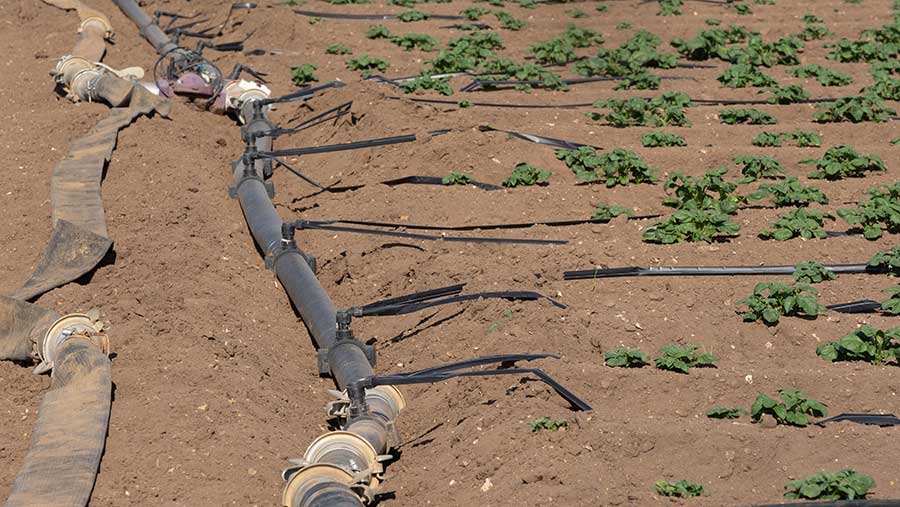Plan now for prospect of summer drought, farmers urged
 © Tim Scrivener
© Tim Scrivener Farmers and land managers are being urged to plan now for the worst-case scenario of another hot, dry spell this summer and to manage water resources to reduce the risk of drought measures.
The National Drought Group (NDG) – made up of senior decision-makers from the Environment Agency (EA), government, the Met Office, water companies and key farming and environmental groups – held its latest meeting on Monday 24 April.
The group also looked at what actions could be taken within the farming sector to improve drought resilience, secure future water availability and support food security.
See also: What next for irrigation in agriculture?
This builds on new commitments in the Plan for Water, including a further £10m through the Water Management Grant to fund on-farm reservoirs.
Much of England is in a better position than last year, but two areas remain in drought – East Anglia and Cornwall.
South West Water will also introduce an additional temporary ban on hosepipe use in the Roadford area in Devon on Tuesday 25 April.
As of the beginning of April, total reservoir capacity across the country was at 94%. This compares with 49% at the end of September 2022, when reservoirs were at their lowest following the summer drought.
John Leyland, EA executive director and NDG chairman, said while water levels had improved across most of the country, the driest February in 30 years, followed by the wettest March in 40 years, highlighted that farmers cannot rely on the weather alone to preserve this most precious resource ahead of summer.
The EA is extending its use of technology, such as e-alerts, to share abstraction notices with farmers more quickly and easily. This technology is currently used in six operational areas and will be rolled out across the country.
The agency is also using satellite data to assess the moisture content of crops and soil, which can be compared with any irrigation restrictions in the area.
This may indicate whether abstractors are working within their licence conditions, and assist the EA with compliance checks, which are done to protect both users’ water rights and the water environment.
Five ways to conserve water on your farm
- Trickle or drip irrigation systems
- Rainwater harvesting – collect and store rainwater from down pipes of farm buildings or roofs
- Capture and store abstracted water when it is surplus following flooding and wet weather
- Disturb soils less to reduce the risk of runoff
- Irrigate crops in the early morning or sunset
Source: NFU
